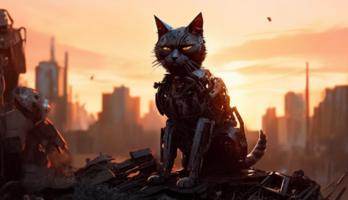Biology - An Illustrated Guide to Science (794127), страница 21
Текст из файла (страница 21)
Theyrelease their gam etes into the water,where they are fertilized by gametesfrom the opposite sex.© Diagram Visual Information Ltd.●hemalcanalpyloriccecumdigestiveglandringcanalesophagusmouthgonoporeampullaradial canalgonadTransverse section of armradial canalpyloric cecumpapula (gill)digestive glandspinegonadampullaradial nerveossiclelateral canalt ube foot121Kingdom Animalia:ChondrichthyesDIVERSITYKey wordscalcificationgilllateral lineDogfishLateral vieweyecaudal fin: upper lobedorsal finspectoral finCartilaginous fishThe Chondrichthyes is a class ofvertebrates that includes sharks,skates, and rays and has about1,000 living species. None ofthese species has any realbone, so the group is sometimesknown as the cartilaginous fish. Onlythe teeth in sharks show calcificationto make a bonelike material, but evenhere the calcium is laid down in adifferent pattern than true bone.● Cartilaginous fish have a long fossilhistory stretching back 450 millionyears, and are regarded as moreprimitive than the bony fish.●ventral fincaudal fin: lower lobepelvic fingill slitsventral viewSharks and dogfishThese animals share the same basicbody pattern and are extremely wellstreamlined.
They are both predators,feeding on mollusks and other fish.● Sharks are ferocious hunters and havea series of sense organs running downtheir bodies called a lateral lin e. Thisline can detect minute changes inpressure caused by the presence offish in the immediate area. Sharks alsohave a very good sense of smelland so can detect chemicalsin the seawater at very lowconcentrations. Theireyesight is, however,poor.● Sharks do not pumpwater over their gills,Instead, they mustmove forward at alltimes to maintainrespiration. The gills arefound on vertical archesthat form the walls of theexternal gill slits.
When waterpasses over the gills, capillaries in thegills absorb oxygen from the water.Shark nets kill sharks by preventingthem from moving, which effectivelydrowns them.mouthclasperpectoral finnostrilcloacaLateral dissectionbile ductpancreatic ductrectal glandventral aortapharynxanusheartrectumstomachintestineliverpancreas© Diagram Visual Information Ltd.●122DIVERSITYKey wordsgaseousexchangegilllateral lineKingdom Animalia:OsteichthyesPerchLateral viewBony fishThe Osteichthyes have skeletons madeof bone and are sometimes called thebony fish.
They are a more variableclass than the cartilaginousfish and consist of 29,000species spread acrossmarine and fresh water.● Bony fish have the goodsense of smell and laterallin es of cartilaginous fishbut also possess goodeyesight.posterior dorsal fin●pectoral finlateral lineoperculumcaudal finGaseous exchangeBony fish have a flaplike structurecalled an operculum that covers thegills on either side of the body. Bymoving this operculum the fish is ableto draw water across its gaseou sexchan ge membranes (the gills) evenwhen the fish is stationary in thewater.● Bony fish also have structures calledswim bladders, which allow them tocontrol their buoyancy.
Again, thishelps the fish remain stationary inwater. In some fish, oxygen can beextracted from the air in the swimbladder so that it acts as a veryprimitive lung.anterior dorsal fineyeanal finmouth●pelvic finInternaI structuremusclesvertebraegillmusclesnerve cordbrainFins and skinBony fish have paired finsthat help in movementthrough the water—both interms of creating a propulsiveforce and stabilizing the fish’smovement. The fins arestrengthened by flexible skeletal raysand do not contain muscle.● The skin of bony fish is covered withoverlapping scales.© Diagram Visual Information Ltd.●anusheartliverswim bladdergonads (ovary or testes)intestinestomach123Kingdom Animalia:AmphibiaDIVERSITYKey wordscloacagaseousexchangegillmetamorphosisFrogExternal viewThe AmphibiaeyetympanumThe class Amphibia includes over5,000 species divided into three maingroups: the frogs and toads, the newtsand salamanders, and the caecilians,which are limbless amphibians thatlook more like snakes.● The oldest amphibian fossils are about360 million years old.● Amphibians spend part of their lives inwater and part on land.●nostrilmoist skinfore limbhind limbSkeletonsphenethmoidmaxillapterygoidquadratojugalpremaxillanasalfronto-parietalsquamosalprooticexoccipitalmetacarpalscarpusradio-ulnasuprascapularvertebrasacral vertebrahumerusiliumGaseous exchangeWhen amphibians hatch from eggs,they have gills for gaseou s exchan gerather like fish.
In tadpoles (thejuvenile stage for frogs and toads),these gills are external. As the tadpolesage, they lose their gills, the tailshortens, and they develop legs andsimple lungs. The m etam orphosis iscomplete when the tadpole leaves thewater as an adult frog.● Adult frogs carry out most of theirgaseous exchange through their skin,which is kept permanently moist forthis purpose. Residual lungs arepresent but probably make a limitedcontribution to gaseous exchange.Close contact with the environmentmay explain the recent decline inamphibian species numbers across theglobe, as pollutants build up in theenvironment.●●urostylephalangesfemurt ibio-fibulaastragalusmetatarsalscalcaneumAmphibians fertilize their eggs in avariety of ways.
Most frogs and toadsemploy external fertilization. Malesalamanders deposit a packet of spermonto the ground, and the female thenpulls it into her cloaca wherefertilization occurs internally.Caecilians and tailed frogs use internalfertilization just like reptiles, birds, andmammals.© Diagram Visual Information Ltd.Reproduction124DIVERSITYKey wordsamnioneggfetusgaseousexchangelungKingdom Animalia:ReptiliaLizardDorsal viewVentral viewscutes (horny scales)mouthcloacaThe ReptiliaThe class Reptilia includes over 7,000species divided into two very largegroups: the snakes and the lizards, andsmaller numbers of turtles andcrocodiles.● Reptiles are found in a wide range ofenvironments, from marine andfreshwater to dry deserts.●digitseyetailDorsal view of skeletonexternal naresLife in dry areasReptiles can survive in drier areas thanamphibians because their eggs aresurrounded by an extra membranecalled the am n ion .
This membranehelps to reduce water loss from thedeveloping egg and fetu s.● Reptiles have lu n gs for gaseou sexchan ge throughout their lives. Theirheart and circulatory systems are welldeveloped, with minimal mixing ofoxygenated and deoxygenatedblood in the heart, althoughthe separation of the two is notcomplete as it is in mammalsand birds.● Reptiles do not generateenough heat to maintain theirbody temperature.
Instead, theirbody temperature varies. Certainbehavior does help to moderate theeffect of external temperature, e.g.,some lizards move into sunlight oncold mornings to absorb more heat.● Most reptiles display elaboratecourtship rituals.● Reptile fertilization is internal: themale’s sperm fertilizes the female’seggs inside the female’s body.lower jaw© Diagram Visual Information Ltd.●orbitskullaxis vertebracervical vertebraephalangesclaviclemetacarpalscervical ribscarpalsradiussuprascapularulnarib cagehumerusneural spinevertebraneural archribpubisfemursacral vertebraefibulat ibiat arsusmetatarsalscaudalvertebraephalangesiliumt ransverse process125Kingdom Animalia: AvesDIVERSITYKey wordsPigeoneyeExternal viewdouble circulationmetabolismcererectricesSkeletonbeakskullwinguppermandiblehind limbslowermandiblecervical vertebraeradiusulnahumeruscarpo-metacarpusscapulasecond digitcoracoidclavicleribpelvissternumpygostylekeel of sternumfibulafemurtibio-tarsusfused tarsi and metatarsiphalangesThe AvesThe class Aves, or birds, includes about10,000 species, and the group ispresent in almost every environmentand across every continent.● Birds are characterized by theadapatations needed for the strenuousmuscle activity required for flight.●WingsA bird's wing is composed of threelimb bones: the humerus, ulna, andradius.● The primary feathers, attached to thecarpometacarpus, propel the birdthrough the air.
They are the largest ofthe flight feathers and are the farthestaway from the body. The secondaryflight feathers run along the ulna ofthe wing and sustain the bird in theair, giving it lift.● A group of feathers attached to thealula reduce turbulence and drag, andalso assist with steering.●Warm bloodedFlight requires a rapid m etabolism ,and birds maintain their bodytemperature above the environmentaltemperature.● Avian circulatory systems are welldeveloped, with complete separationof oxygenated and deoxygenatedblood in a dou ble circu lation system.This increases the rate at whichoxygen can be supplied to thepowerful flight muscles.●Wingcarpometacarpusalularadiusulnahumerus●●primariessecondariesFertilization in birds is internal.Development of the young occursoutside the body in hard-shelled eggs.There is often significant parentalbehavior to protect the eggs and raisethe young.© Diagram Visual Information Ltd.Reproduction126DIVERSITYKey wordsfetusmammary glandsplacentaKingdom Animalia:MammaliaRabbitExternal viewThe MammaliapinnaAlthough mammals contain only about5,000 species in total, the class is oftenregarded as the most successful animalgroup because of the sophistication ofits members, and their relatively latearrival in evolutionary terms.● Mammals are divided two maingroups: the marsupials, who give birthto live but very undeveloped young,and placentals, who give birth to welldeveloped young.●HairAll mammals have hair or fur on theirbodies.
Even marine mammals likewhales and walruses have some hair.● Hair is important in: heatinsulation (all mammals arewarm-blooded); protectionagainst sunlight; sensitivity(as in whiskers); and foridentification, e.g., malesand females of the samespecies may have different hair color.●Reproductive advantagesMammals have entirely internalfertilization, with the penis of the malebeing inserted into the vagina of thefemale. Development of the fetu s isalso internal due to the presence ofthe placen ta, an organ that allowsmaterials to be exchanged betweenthe mother and the fetus.● After birth the young are fed on milkproduced by m am m ary glan ds.
Insome species extensive parentalbehavior also helps to protect andraise the young.furwhiskersnostrilLateral view of skeletonskulllower jawcervicalvertebraeribsthoracic vertebraefloating ribslumbar vertebraepatellascapulafemur© Diagram Visual Information Ltd.●lliumhumerusfibulasacralvertebraeradiuspubistibiaulnaischiumcarpalsmetacarpalsphalangescaudalvertebraephalangestarsalsmetatarsals127Nutrition: typesMAINTENANCEKey wordsTree diagram of nutrition typesorganic matterparasiteorganismsOrganic matterautotrophicheterotrophicBiologists regard organ ic m atter asmaterial that has been produced byliving organisms.● Inorganic matter is regarded as simplematerials like water, mineral salts, andcarbon dioxide.
The vast majority ofmaterial in the world is inorganic. Toconvert simple inorganic matter intomore complex organic matter requiresan input of energy.●Autotrophic nutritionAutotrophic organisms are able toproduce organic matter from simpleinorganic materials. They consequentlycreate their own food—but require asource of energy to do this.● Photoautotrophs harvest energy fromlight to produce organic matter.● Chemoautotrophs use energy frominorganic reactions in the environmentto drive the creation of organic matter.●chemoautotrophic(e.g., nitrogencycle bacteria)saprotrophic(some bacteria,fungi)Heterotrophic nutritionHeterotrophic nutritrion is typical ofanimals.
















